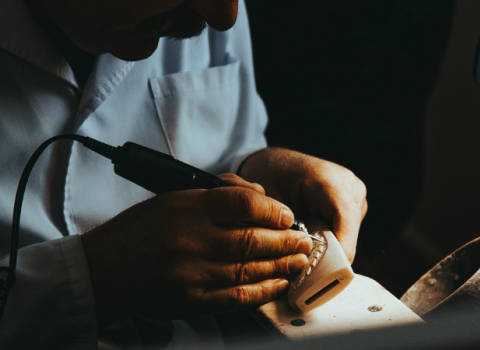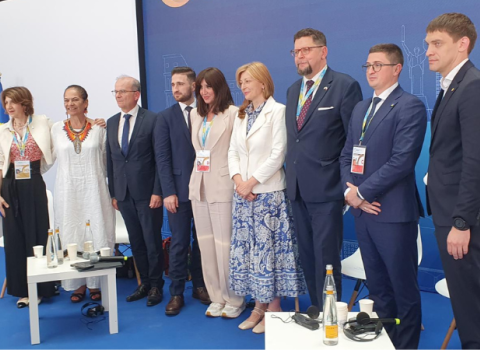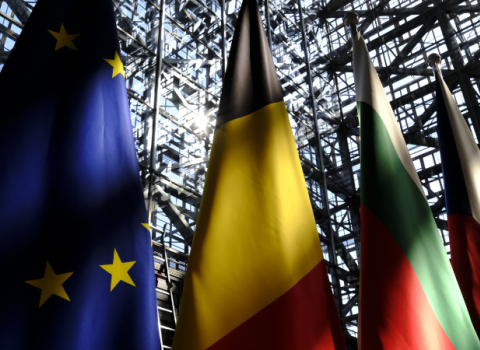
José Manuel Barroso
Turning innovative ideas into reality is one of the EIT’s chief raisons d’être. But another raison d'être is to attract and retain the best and most talented students, researchers and staff from across Europe, and worldwide. I am convinced that the EIT can play a major role in making Europe tomorrow’s magnet for talent.
The EIT is itself an innovation. It started off as a project of the [European] Commission that is so attached to promoting skills, research, and innovation in order to enhance jobs and growth and European competitiveness.
The EIT builds capacity in the participating institutions. It provides resources to applying partnerships on a competitive basis. It will evolve with the needs of the economy and society. It will create new connections and spark new ideas.
It will make bets on innovative technologies and projects. Not all of these will pay off – but that element of risk is essential to success.
The EIT will put people, and above all new forms of interaction between people, at the heart of its innovation strategy.
A breeding ground for new ideas
By allowing the brightest minds and talents to collaborate within highly-integrated innovation communities, the EIT will become a breeding ground for new ideas; a reference model for the modernisation of research organisations in Europe.
The EIT will remove obstacles to the free flow of information and ideas. By helping to create this ‘fifth freedom’ – the free movement of knowledge – it will inspire existing but fragmented innovation actors to go beyond existing collaboration networks and create truly integrated partnerships.
If Europe is to remain dynamic and competitive in a globalised knowledge economy, then it is clear that national, sectorial and organisational borders should no longer get in the way.
A culture of openness to foster innovation
The EIT will make this possible: it will allow a new generation of Europeans to come together. Shared strategies will harness different creative approaches to face up to challenges of shared European concern, creating added value and a competitive advantage at the European level. A culture of openness can itself foster innovation.
In this way, the EIT will make a significant contribution to the renewed Lisbon Strategy for Growth and Jobs, and boost Europe’s position among its international competitors.
In order to fulfill its mission, the EIT, an Institute of Innovation and Technology, must remain faithful to its goal of taking ideas to the market in the form of innovative products, services and business models.
This will be one of the main benchmarks of the EIT's capacity to promote and generate innovation all over Europe.
Given this context, full participation of business partners is a condition sine qua non for the institute’s success.
That is why the business perspective has been hard-wired into the EIT from the first. It is no accident that more than half of the Governing Board has business experience.
The business world will be represented at an operational level as well: companies, including SMEs, will be crucial for ensuring that knowledge outcomes are successfully – and efficiently – converted into new business ventures.
Galvanising new products
Business partners will also ensure that the EIT keeps its feet on the ground; that it galvanises new products, services and business models that answer real-world needs and concerns, for tomorrow's challenges. I have great confidence in industry in Europe provided we have an appropriate innovation base.
By bringing together the most innovative business partners, and the best researchers and research organisations in Europe, the EIT will fully integrate research, education and innovation - the three sides of the knowledge triangle - just like the best universities in the world.
Freedom from political and bureaucratic interference
I would like to underline that the EIT will focus on its mission without any political or bureaucratic interference. To do this, we have handed it an unprecedented level of autonomy.
But this means that the ball is now in the Governing Board's court, and it has some important choices to make.
These include deciding how to turn EIT communities into real integrated partnerships; how to attract funding on the required scale, especially from the private sector; how to attract the most innovative businesses and the best research organisations; and how to ensure that the EIT, while drawing on current experiences, provides a reference model to inspire and drive change.
The Board should also keep in mind Europe’s policy priorities. It will not be working in a vacuum. Energy and climate change are the obvious examples in today’s European society: fundamental challenges that require a wide range of policies and measures rooted in solid science, but calling out for a fresh approach to take us into a truly low-carbon Europe.
Re-engineering organisations
Information and Communication Technologies, or ICTs, are also important. They could be used, for example, to re-engineer organisations in the social services sector – the largest employer in many Member States.
Innovative application of new ICTs to strategic sectors like e-health, e-learning and e-governance could unleash extraordinary reserves of productivity, efficiency and quality service delivery. It would also deliver tangible benefits for the quality of life of Europe’s citizens.
Europe, like the world at large, is facing an economic slowdown and new, sometimes very tough challenges. We can turn these challenges into an opportunity. But only if we make innovation our reflex. Only by using the sole real competitive advantage that Europe has: its extraordinary knowledge base, the excellence of its higher education institutions, and the entrepreneurial spirit of its citizens.
We've laid the right foundations. We've appointed a world class Governing Board. The time has come for the EIT to throw open its doors.





 A unique international forum for public research organisations and companies to connect their external engagement with strategic interests around their R&D system.
A unique international forum for public research organisations and companies to connect their external engagement with strategic interests around their R&D system.